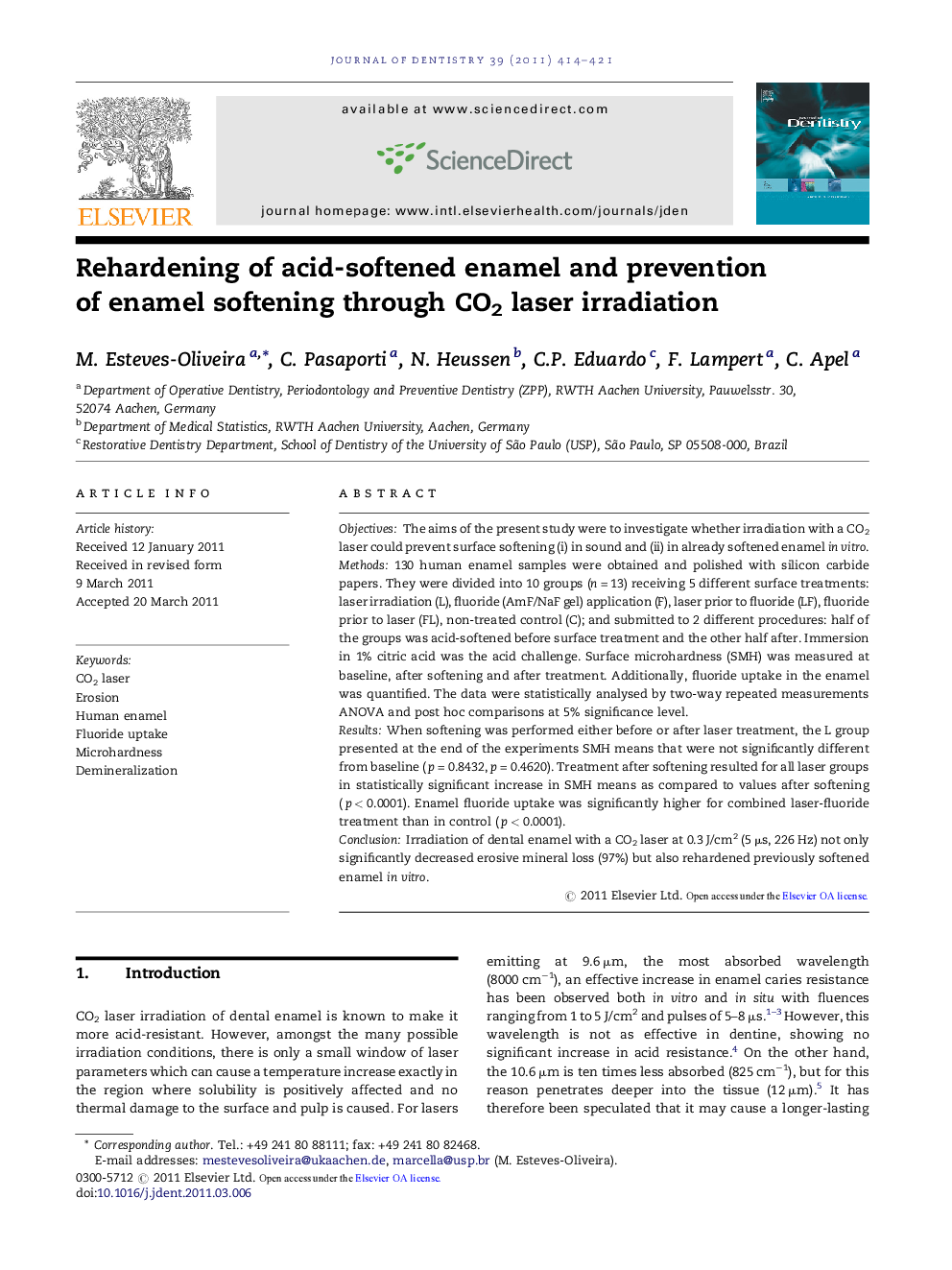| Article ID | Journal | Published Year | Pages | File Type |
|---|---|---|---|---|
| 6053602 | Journal of Dentistry | 2011 | 8 Pages |
ObjectivesThe aims of the present study were to investigate whether irradiation with a CO2 laser could prevent surface softening (i) in sound and (ii) in already softened enamel in vitro.Methods130 human enamel samples were obtained and polished with silicon carbide papers. They were divided into 10 groups (n = 13) receiving 5 different surface treatments: laser irradiation (L), fluoride (AmF/NaF gel) application (F), laser prior to fluoride (LF), fluoride prior to laser (FL), non-treated control (C); and submitted to 2 different procedures: half of the groups was acid-softened before surface treatment and the other half after. Immersion in 1% citric acid was the acid challenge. Surface microhardness (SMH) was measured at baseline, after softening and after treatment. Additionally, fluoride uptake in the enamel was quantified. The data were statistically analysed by two-way repeated measurements ANOVA and post hoc comparisons at 5% significance level.ResultsWhen softening was performed either before or after laser treatment, the L group presented at the end of the experiments SMH means that were not significantly different from baseline (p = 0.8432, p = 0.4620). Treatment after softening resulted for all laser groups in statistically significant increase in SMH means as compared to values after softening (p < 0.0001). Enamel fluoride uptake was significantly higher for combined laser-fluoride treatment than in control (p < 0.0001).ConclusionIrradiation of dental enamel with a CO2 laser at 0.3 J/cm2 (5 μs, 226 Hz) not only significantly decreased erosive mineral loss (97%) but also rehardened previously softened enamel in vitro.
